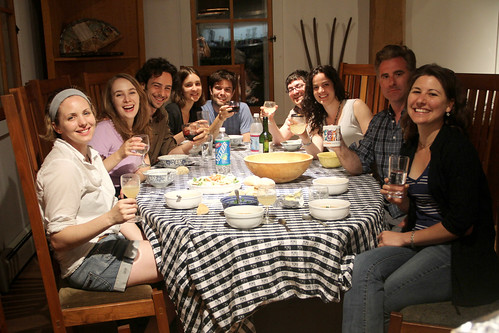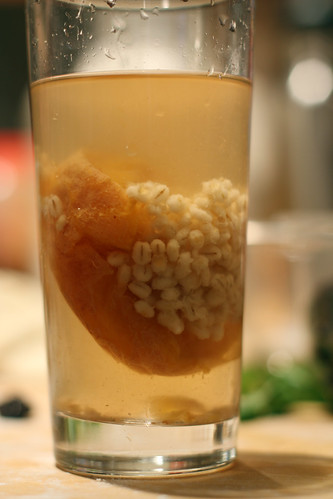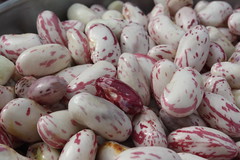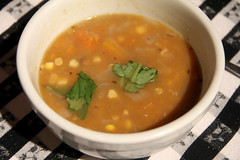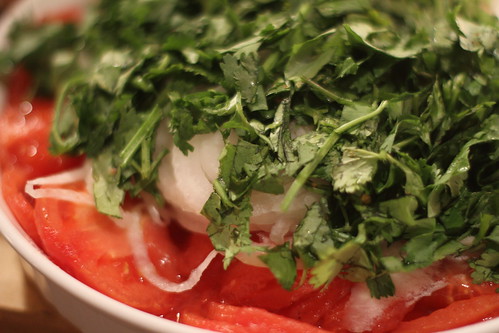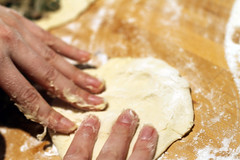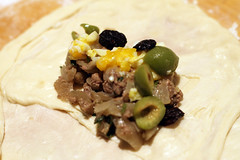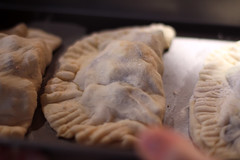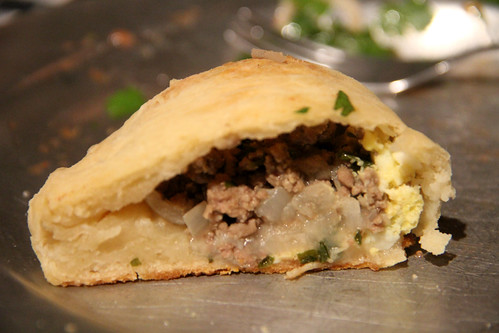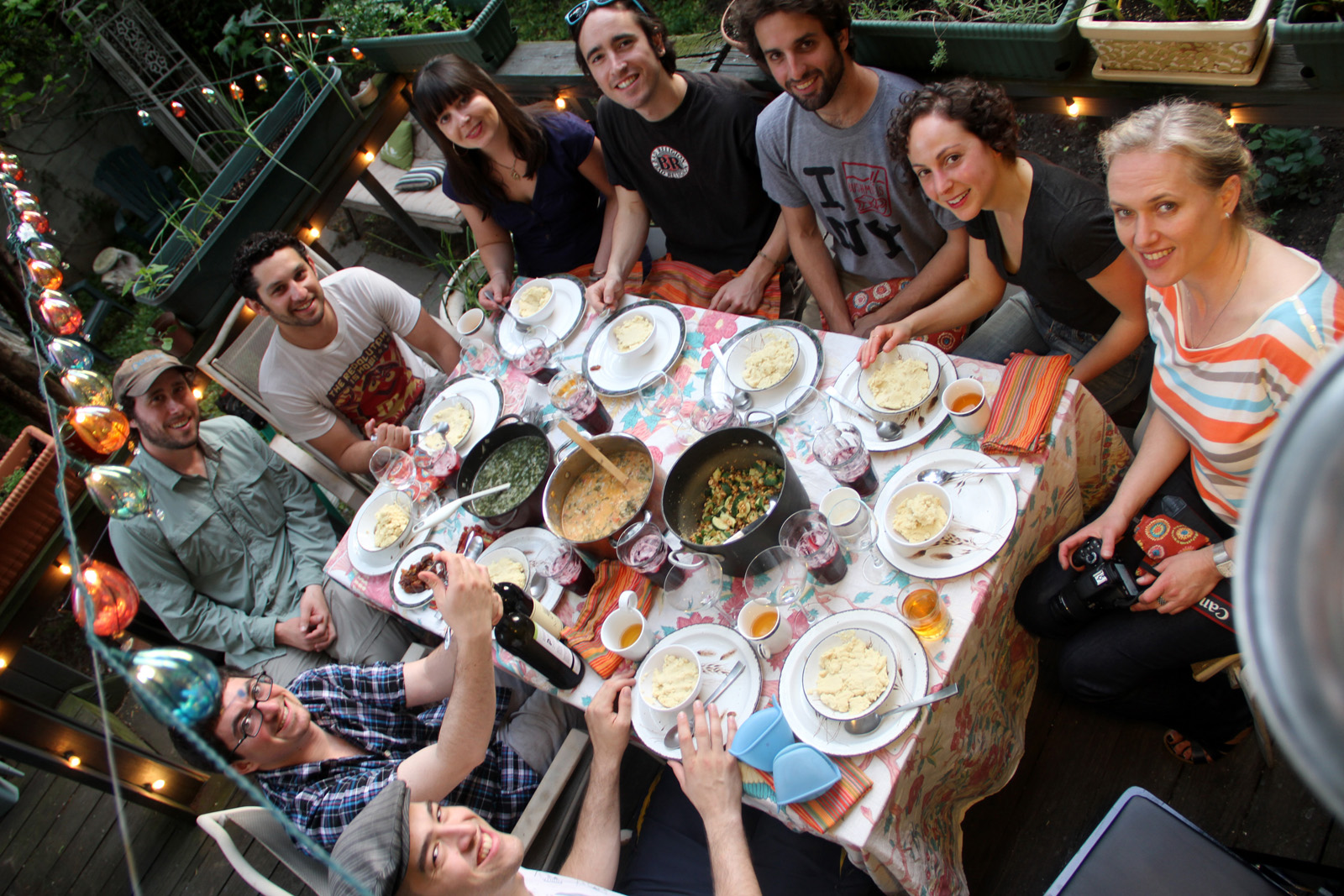As a small cluster of islands between Madagascar and Mozambique, Comoros offers a cuisine that's about as exotic as you'd imagine. It's situated off of Africa, but heavily influenced by the Arab, Indian, and more recently French culinary histories. This means seafood, stews, coconuts, and lots of spices in combinations that are totally trippy to Western tastebuds!
Huge thanks to Evin, Zoe, and Kayla for hosting us at their beautiful home (and well equipped kitchen!) in Oakland, CA. We had a number of old and new friends in attendance: Scott, Sylvia, Raph, Margaret, Alicia, John, Jessica, Katie, Carrie, Cass, and Graeme. We also enjoyed the company of our youngest nosher to date, Lulu, who was a very brave two year old in trying most of the food!

Langouste à la vanille | Lobster with vanilla sauce | Recipe: French, English translation
Never in my wildest dreams would I have thought of combining vanilla with seafood. But, by golly, it's pretty darn amazing.
Cooking the lobster was quite the feat to begin with. First off, the recipe leaves out the very important first step of steaming the lobster; in my naïveté I had somehow figured you just cut the thing open while still alive. Anyway, we boiled them just enough to, uh, prevent them from squirming on the cutting board, and then Scott split them in two. Sylvia stuffed them with chopped-up vanilla beans, salt, and pepper, and then we cooked them in pans until done. The splitting was good not only for getting the flavors inside, but also let us check the flesh for done-ness, so we cooked them not a moment longer than necessary.
But let's be honest, the best part of this all was the sauce. Rare is the moment in a cooking enthusiast's life when simple, well-known ingredients in novel combinations come together for a mindbendingly new creation, and that's what happened here. Melt a stick of butter, add in a few chopped-up vanilla beans, fry five minutes, remove from heat, add salt and pepper, and stir in a container of crème fraîche. It was meant for the lobster, but quite frankly was tasty on just about everything.
(A note on the beans: normally they're pretty pricy, at least $1 apiece, but Xanath Ice Cream on Valencia in San Francisco happens to sell them for less than half that: a 1/4 pound package has about 25 and retails for $10.)
M'tsolola | Green plantains with fish in coconut milk | Recipe: French, English translation
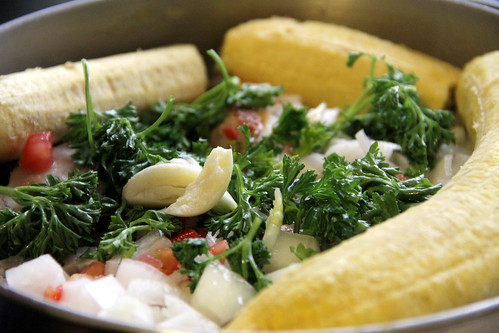
I was surprised at how tough it was to find green plantains in Berkeley. Ripe ones were no problem, but the recipe was adamant that they needed to be as green as possible. (I also could have made a mistaken assumption in the translation, but I'm pretty sure that when they call for "banane verte" they want plantains.) We had to go to four stores, and it wasn't until the Korean market on Telegraph that we found ones green enough to work.
Anyway, this dish was loaded with plantains, layered with fish and nominal vegetables. For the fish I chose tuna since it seemed to be a common one there, and rather than frying as specified, I seared it in a bit of oil. The whole mess simmered in coconut milk we made ourselves, see lower down for that process. All in all, I think this dish was OK, though I probably should have cooked the plantains longer in the beginning, they were still pretty starchy. Also, the recipe is way too much, this serves more like 20 and not the "4 to 6" the recipe says.
Ambrevades au curry | Pigeon pea curry | Recipe: French, English translation
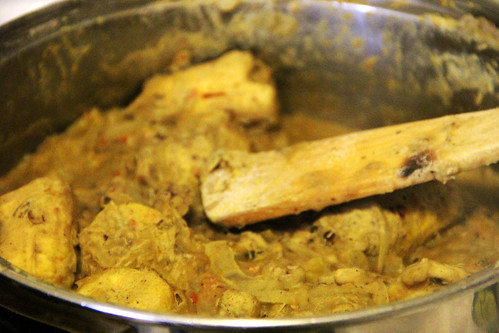
Pigeon peas is one of those things you can find very easily in Brooklyn thanks to our large Caribbean population, but is scarce in California. As a substitute we used frozen black eyed peas, and as far as I can tell it turned out just fine. This curry is pretty darn tasty, and makes for a substantial vegan treat. Love the cardamom in there!
Achard aux legumes | Blanched vegetable salad | Recipe (scroll on page): French, English translation
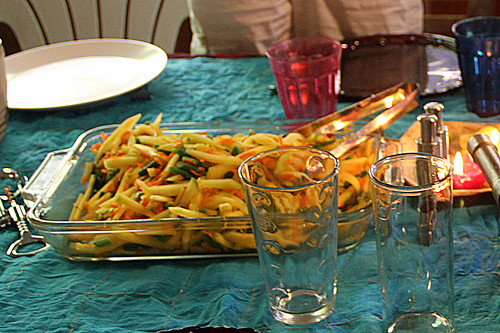
In India, achar is the name for those intense little pickled things you have on the side of your meal. The concept kind of made it to Comoros, except that it's more of a tangy salad sort of thing and definitely not pickled for any length of time. There seem to be all sorts of ways to make this and ingredients to throw in. I'm pretty fond of green mango and green papaya, so we left out the cabbage in favor of these. The dressing of sauteed ginger was pretty nice!
Riz coco | Coconut rice

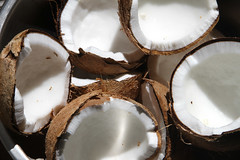
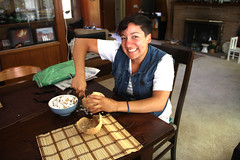
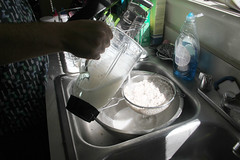
First Zoe pounded them with a hammer to crack them in two, then a whole team took at them with a butterknife to painstakingly extract the fruit from the shell. I then ground the flesh up in a food processor and put it in a strainer. Then we extracted the milk by pouring hot water over them, much like making coffee, and poured it back over a few more times to make it thicker.
That's the hard part. Making the rice is, well, just like making rice, except you use this freshly extracted elixir in place of water.
Poutou | Hot sauce | Recipe: French, English translation
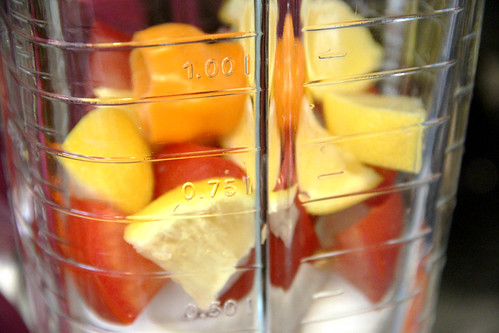
Couldn't be simpler. One habanero or scotch bonnet pepper, one tomato, half an onion, half a lemon, salt. I perhaps willfully misinterpreted the recipe by putting in the whole lemon instead of just its juice, but if anything the extra substance did it well. Made for a fantastic salsa of medium consistency, medium spice, and maximum flavor and happiness.
Ladu | Ground rice dessert | Recipe

After the Cameroon meal, we made a rule of not deep-frying in other people's houses, so we couldn't make the classic Comoran dessert of donass, which is how they pronounce "donuts." All else I could find was ladu, which is based off an Indian dessert. I'm not sure where things went wrong — maybe I didn't grind the rice enough, or maybe the recipe should have mentioned when to put in liquid — but this clearly wasn't what was intended. But we added plenty of coconut water to this ghee-fried broken rice, formed it into balls with powdered sugar, cardamom, and pepper, and then baked it off once all the balls were crumbling, all in an effort to salvage it. And you know what, they tasted astonishingly like popcorn, and while I wouldn't recommend this recipe, it wasn't a failure either.
As we were finishing up the meal, I just happened to check my phone, and noticed several dozen emails. I'd had the great fortune of being chosen to send an email to The Listserve, a worldwide list of tens of thousands where one member a day gets to send an email, and mine got sent during the meal! It was Laura's great idea to ask people to help us with their own country's meals as we trundle through the alphabet, and the response so far has been phenomenal! From Iceland to Peru to the Philippines, many of our upcoming meals will have the benefit of our new farflung network's contributions.
Next week, we'll be up in Anderson Island, Washington, where we hope to catch our trout for a Costa Rican meal!

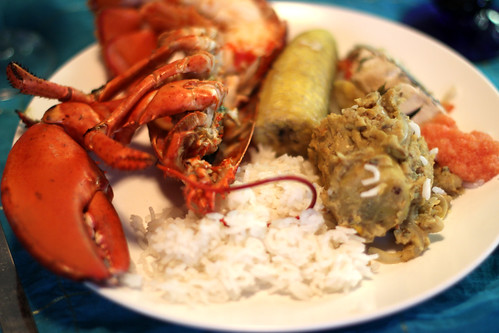
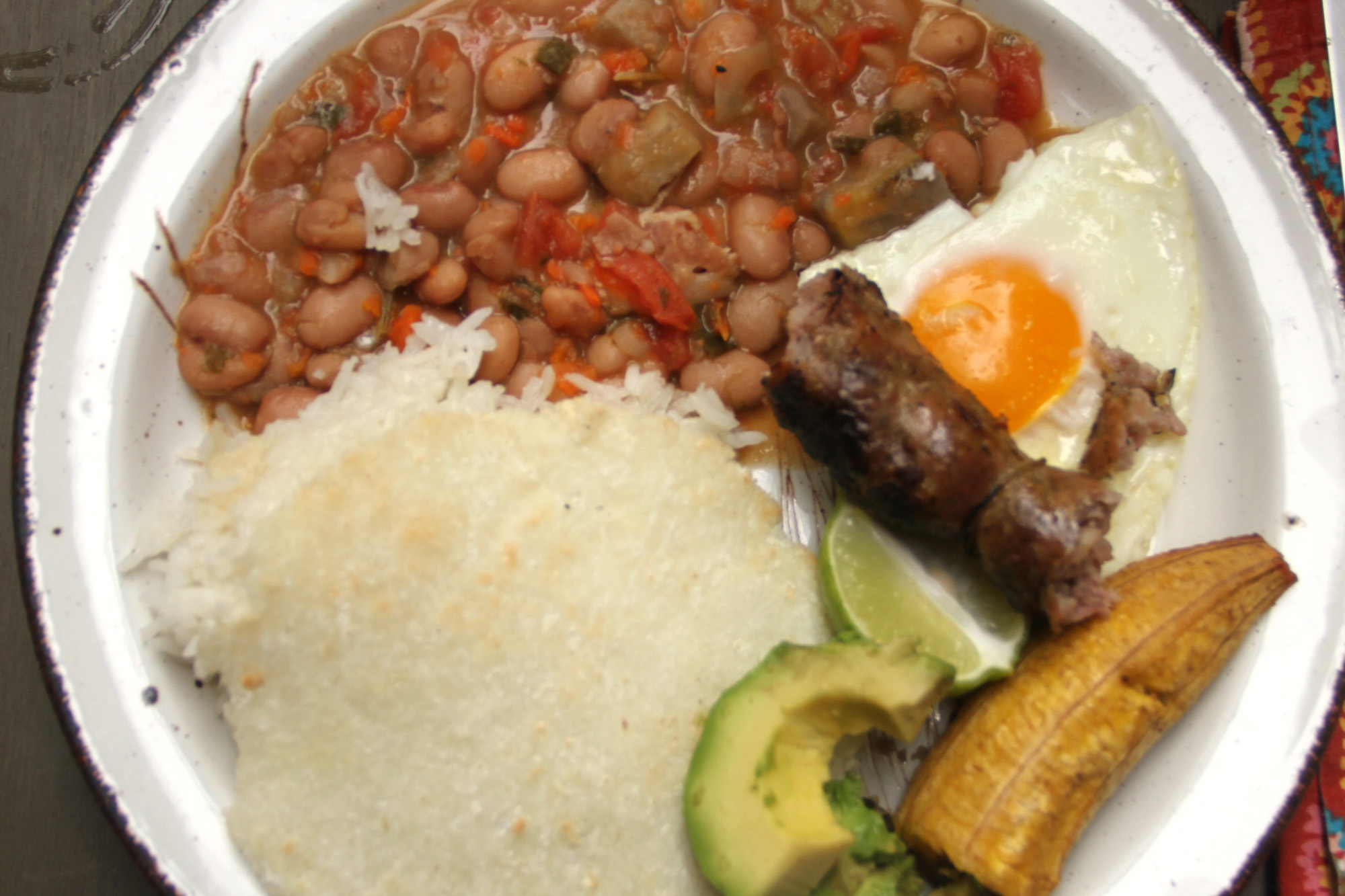
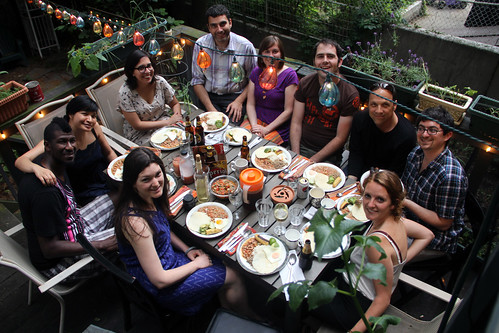
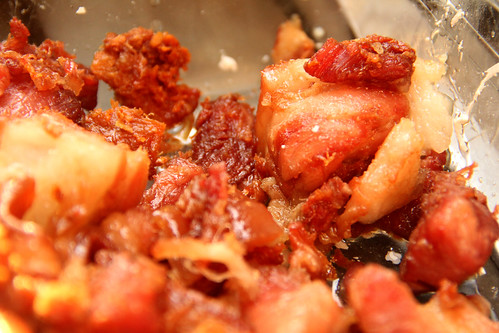

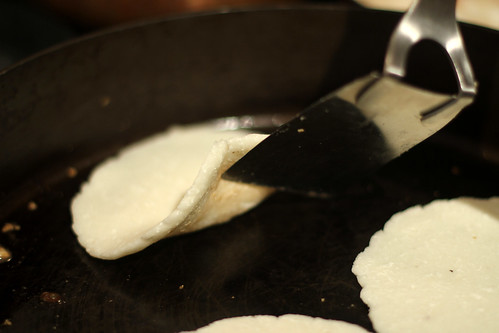
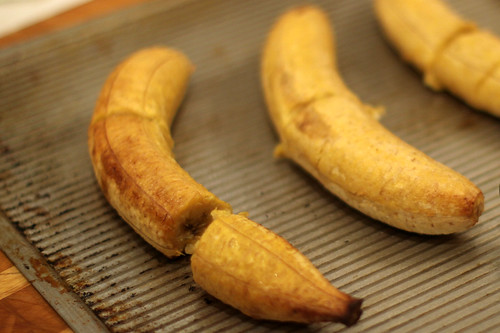
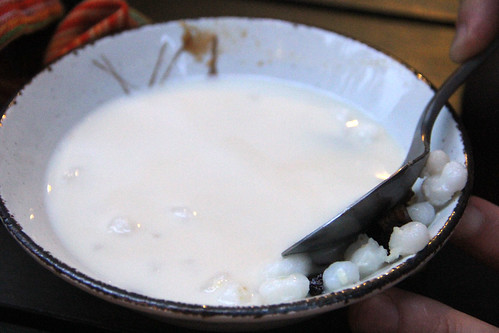
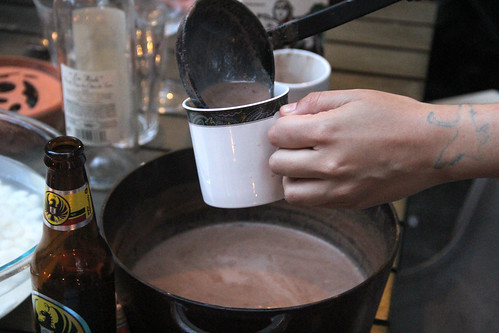
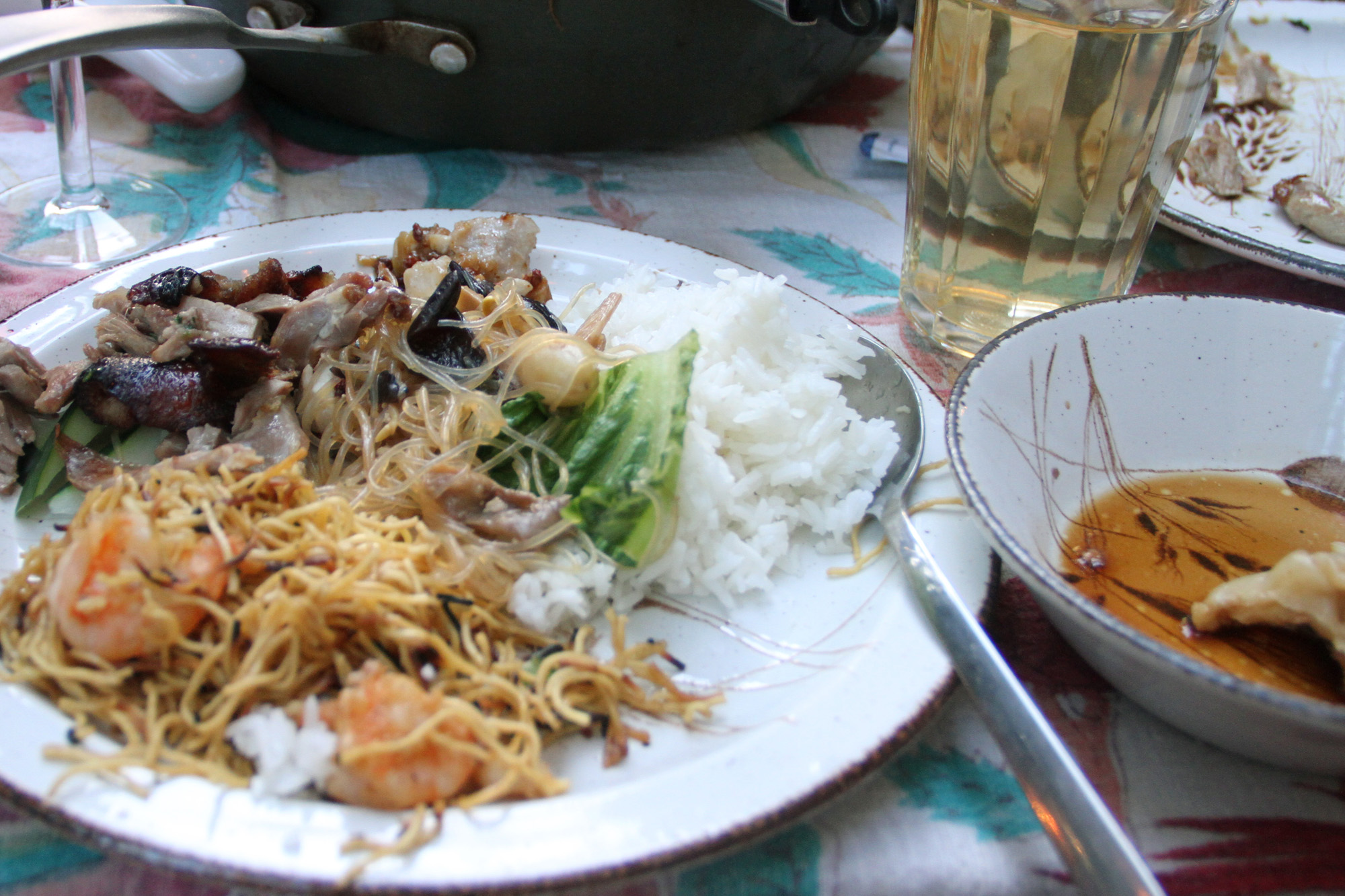

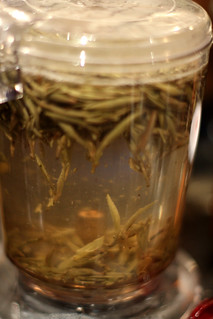
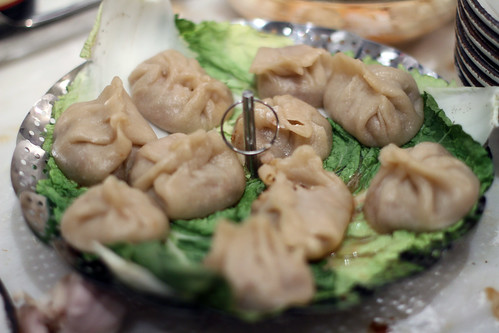







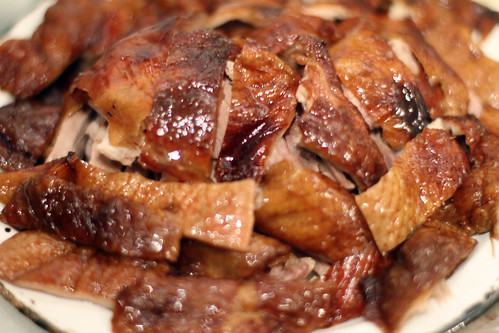
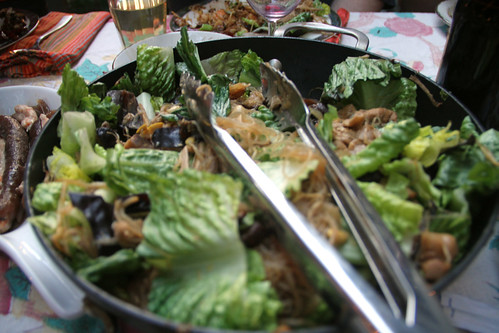

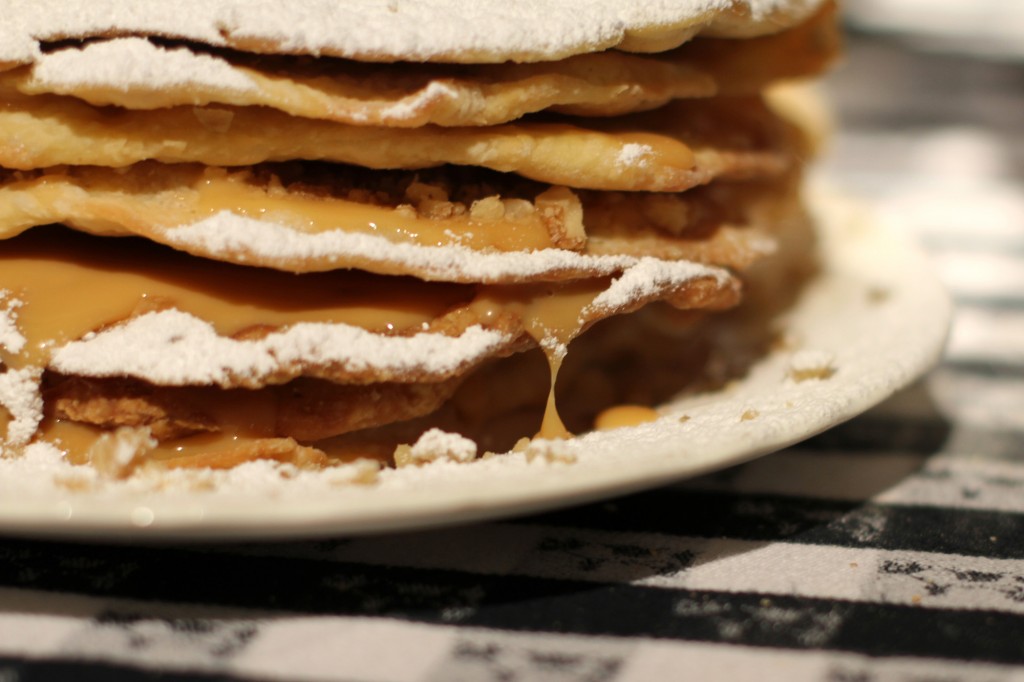
 photo by Kirsty Bennett
photo by Kirsty Bennett